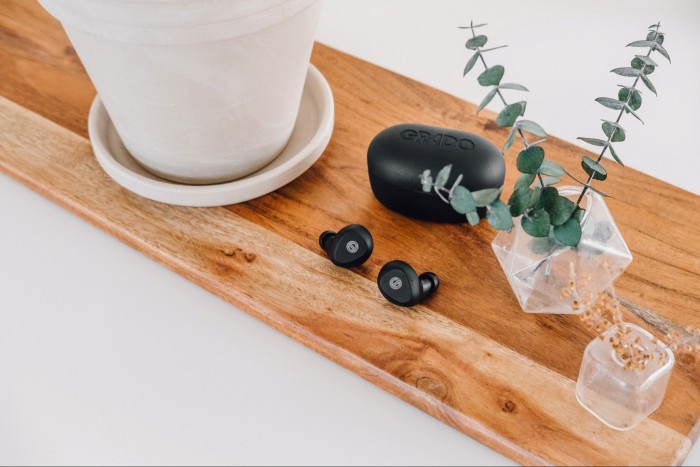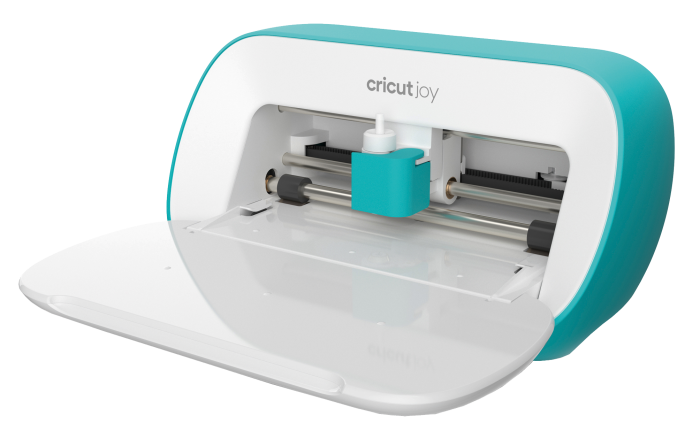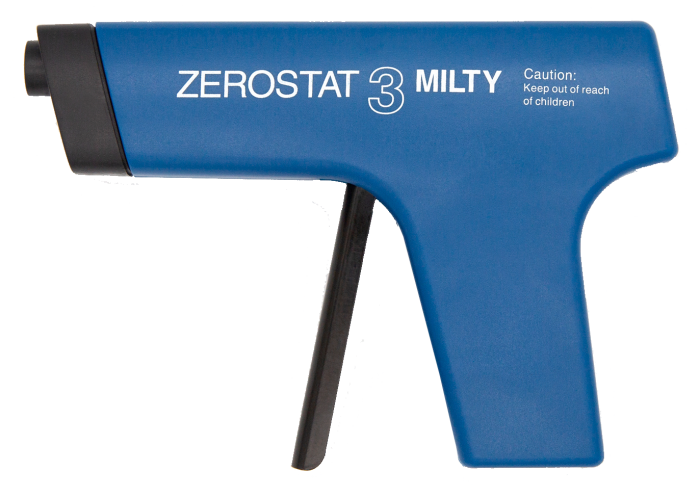Last-minute gadgets for Christmas

Roula Khalaf, Editor of the FT, selects her favourite stories in this weekly newsletter.
In October, I introduced you to my favourite over-ear headphones of recent times, possibly ever, the £379 Iris Flow. I have now found the best “true wireless” – meaning fully cordless – earphones I’ve ever experienced. The GT220 phones, from the American maker Grado, are absolutely astonishing. I forced my son, who swears by Apple’s superb £249 AirPods Pro, to try the GT220s. Having grudgingly put them in his ears, he had to admit, “These actually fit really well”. Then, after a couple of minutes listening: “OK. You win. These make everything else sound like mud.”
That’s an overstatement, but I agree that they are a quite different animal from anything else around.
There are many superb true-wireless headphones out there. The Apple offering beloved of my son has the cleverest features; Master & Dynamic’s MW07 Plus, the best looks and the richest, most sophisticated sound; Bose’s QuietComfort earbuds, the best noise cancelling. But for sheer, unadorned, breathtaking impact and joy, Grado wins.
The GT220s have no noise cancelling, no fancy features and look clunky. But the sound is so huge and glorious, I have repeatedly found myself baffled by how it’s physically possible for so much sound, and of such punch and excitement, to come from drivers just 8mm across.
Grado is a very unusual company. It’s a small Italian-American family-run business based in a graffiti-spattered factory in a not-great part of Brooklyn. The factory was the family fruit store until the 1950s.
Most Grado headphones are expensive – up to almost £3,000 – and many are partly made of wood. Which makes these plastic beauties not just a bargain, but a requirement for anyone who loves listening to music while on walks or around the house. To get the best out of them, make sure you feed them tracks from the best-quality streaming services, such as Tidal, Deezer or similar.
Grado GT220, £250, grado.co.uk

Craft counsel
I would be misleading you if I said I spend a great deal of my downtime crafting. Hence this, fresh in from the US, is the first crafting machine I’ve ever reviewed here. Cricut, of South Jordan, Utah, makes a range of hobbyist creative cutting machines. This is the entry-level model. It’s also a writing and drawing device capable of all manner of fancy fonts, because the app-controlled mechanism can be set up to work as either a blade or a pen.
The Cricut Joy works with stiff craft paper, card, vinyl and many other materials to make customised greetings cards, kitchen-container labels and decorations. The machine connects by Bluetooth to your phone, PC or tablet, and there’s a library of premade designs to get it whirring into life. I have the crafting ability of an orangutan, but, in my view, the real fun starts when you go freestyle and design your own.
When I put the Cricut in the hands of my friend’s drama-student daughter a few weeks before Christmas, it started to make the cut both as a piece of technology and as a creative tool. I was really impressed with what she had it doing within minutes.
Cricut Joy, £179.99, johnlewis.co.uk

A smash hit dust repeller
Vinyl record sales have been shooting up for a while now. But what I suspect a lot of the hipster vinyl fans haven’t quite got their heads round – and equally, is giving older vinyl buyers an unpleasant dose of nostalgia – is dust.
I remember chemical-imbued cleaning cloths, fluids and little brushes that stayed on the record as it revolved to keep dust at bay. Piezoelectric devices came in as I went over to cassettes. They coated a record’s surface with both positive and negative ions, stopping the vinyl from actively attracting dust.
A big 1970s prawn-cocktail-and-Black-Forest-gateau welcome, then, to this retro but extremely useful piezoelectric gadget for vinyl’s second wave. You waft the device across the surface of the disc, pulling and releasing the trigger. It is good for 50,000 trigger operations, which means about 10,000 LP sides. It doesn’t use batteries – it’s powered by your hand squeeze – and, on my LPs, its dust-repelling ability seemed to last for more than one playing.
Milty Zerostat 3, £59.95, milty.co.uk

The perfect Combi
The Sage Combi Wave is a perfectly good microwave, but what puts it head and shoulders above its peers – and makes it worth every penny of its £400 price tag – is that it is also a convection oven and air fryer.
The convection oven is perfect for baking and roasting quickly and the air-fying mode – healthier and a million times less hassle than deep-fat frying – means you can do virtually fat-free French fries straight from the potato in 30 minutes. Many other vegetables, like broccoli and green beans, also air-fry wonderfully.
But the Combi’s real genius is its Fast Combi mode, which combines all three settings, controlled and switched around by complex algorithms. A 1.7kg How To Spend It test-chicken came out superbly with a 75-minute cook straight from the fridge.
There are other brilliant touches, too. The door mechanism is virtually silent – it’s amazing how much clunking and clanking microwaving can involve. And there’s a button to stop the turntable if you’re using a rectangular dish. Sage, indeed.
Sage Combi Wave 3-in-1, £399.95, sageappliances.com
Comments